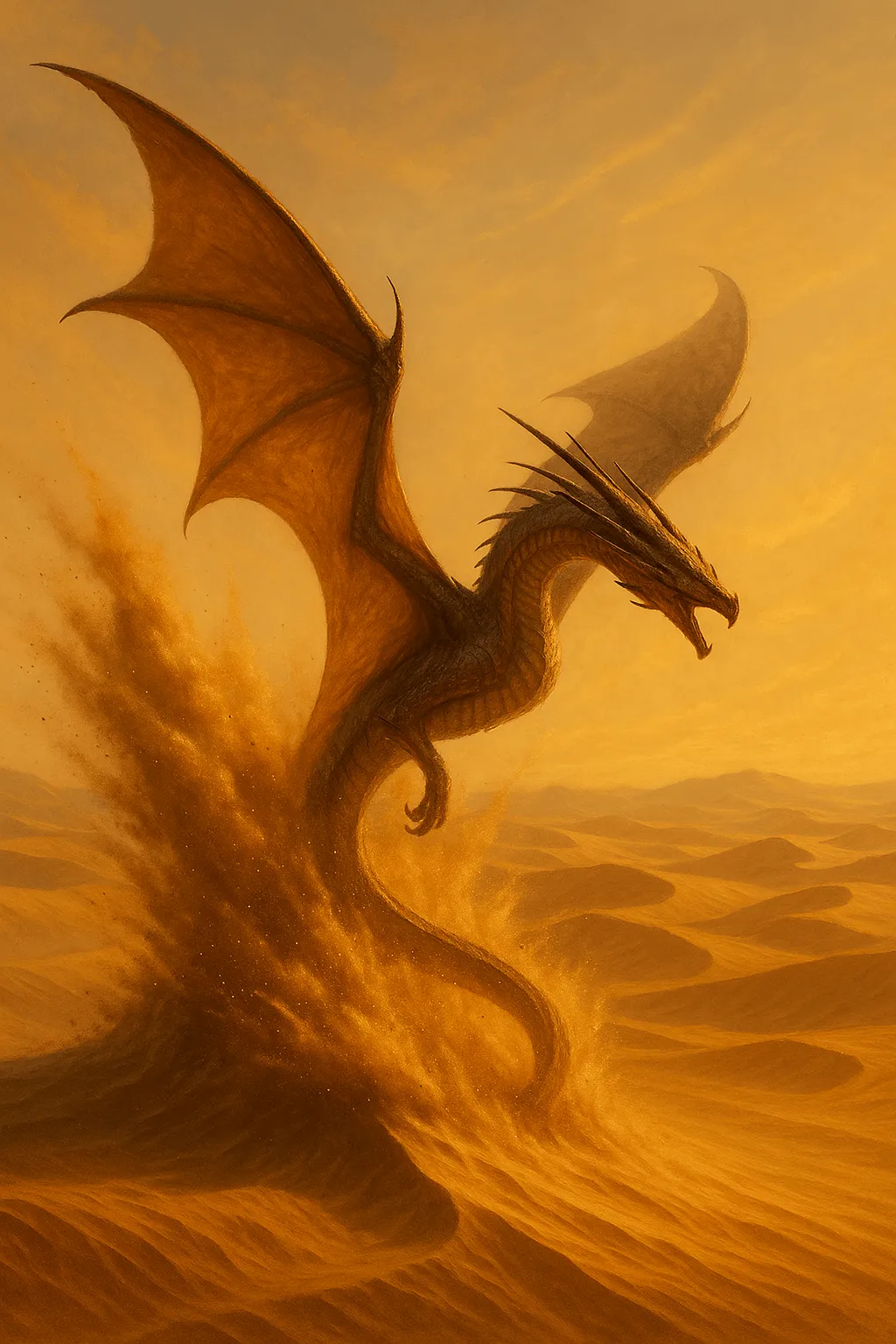
Where dunes shift and silence reigns, the sand still listens.
Few beings embody the extremes of the desert more completely than the Dune Serpent. With a body built for speed and subterfuge, these serpentine dragons thrive where scorching sun meets wind-carved dune, slipping between air and sand with the fluidity of a mirage. While far from the largest of their kin, the Dune Serpent’s agility grants it a kind of dominion over the shifting sea of the desert, where larger creatures flounder and only the swift survive.
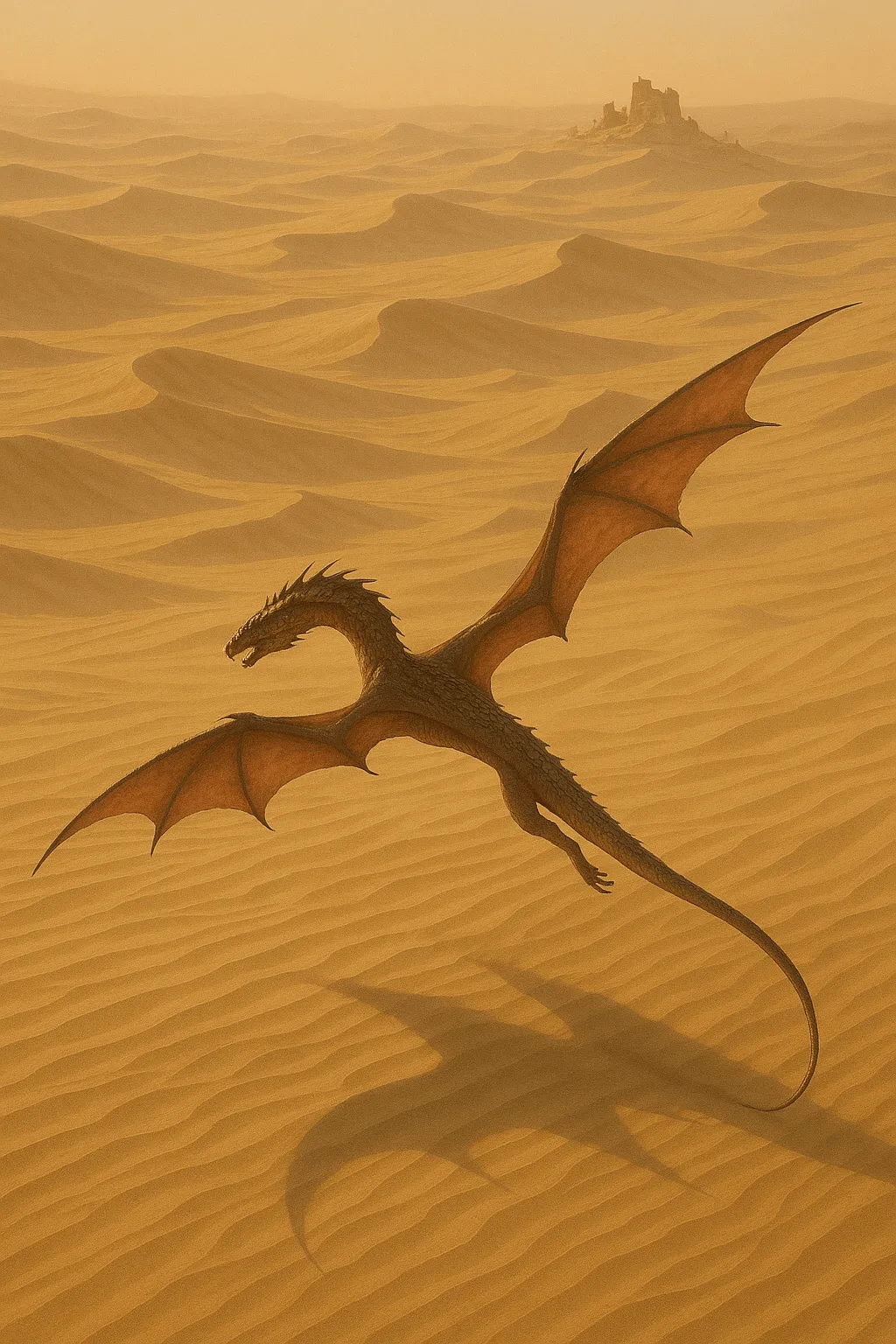 Unlike bulkier dragons, the Dune Serpent’s anatomy is whip-thin—its wings narrow and blade-like, optimized not for soaring but for gliding low and fast across dunes. When grounded, it folds these wings tight against its body and dives headfirst into the sand with shocking force, vanishing from sight in a plume of dust. Specialized scales allow it to “swim” through sand much like an eel through water, using undulating motion and frictionless plating to navigate beneath the surface. Their sense of vibration is so acute that they can track movement from over a league away—detecting footfalls, caravan wheels, or even the rattle of loose armor.
Unlike bulkier dragons, the Dune Serpent’s anatomy is whip-thin—its wings narrow and blade-like, optimized not for soaring but for gliding low and fast across dunes. When grounded, it folds these wings tight against its body and dives headfirst into the sand with shocking force, vanishing from sight in a plume of dust. Specialized scales allow it to “swim” through sand much like an eel through water, using undulating motion and frictionless plating to navigate beneath the surface. Their sense of vibration is so acute that they can track movement from over a league away—detecting footfalls, caravan wheels, or even the rattle of loose armor.
 Despite being dragons, Dune Serpents do not hoard gold or demand tribute. They hoard paths. A mature Dune Serpent knows every pass, ridge, and temporary wind-sheltered hollow within its claimed stretch of desert. Some nomads swear that the serpent will not strike unless one trespasses into a “forbidden drift”—a specific dune or ravine known only to the dragon. Others believe these dragons protect certain oases or ruins, though whether out of territorial instinct or buried memory remains unknown.
Despite being dragons, Dune Serpents do not hoard gold or demand tribute. They hoard paths. A mature Dune Serpent knows every pass, ridge, and temporary wind-sheltered hollow within its claimed stretch of desert. Some nomads swear that the serpent will not strike unless one trespasses into a “forbidden drift”—a specific dune or ravine known only to the dragon. Others believe these dragons protect certain oases or ruins, though whether out of territorial instinct or buried memory remains unknown.
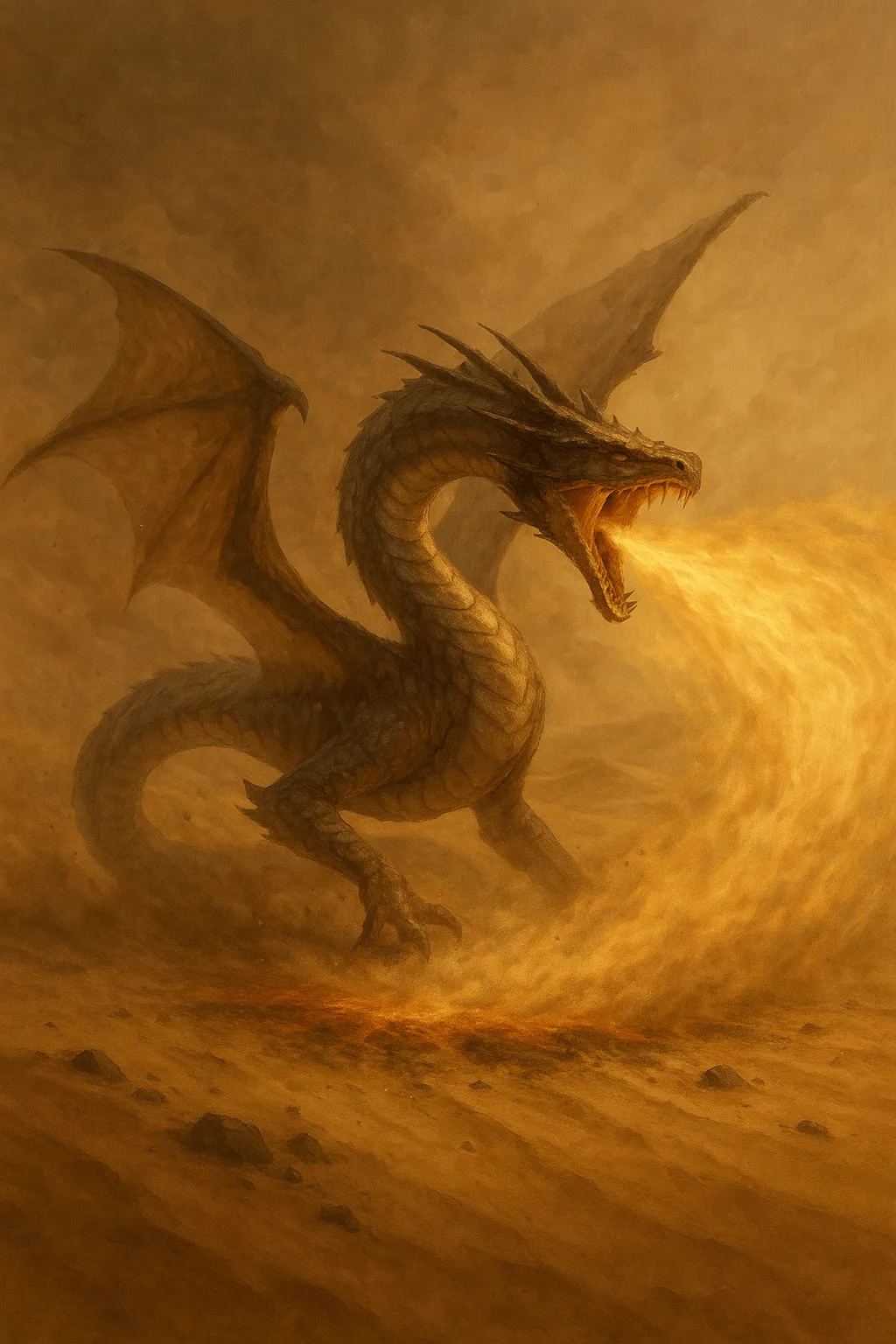 Their breath weapon is not fire but heat itself: a wave of scorching wind expelled from their lungs that can turn bone to charcoal at close range. This thermal burst is typically used to create instant updrafts, disrupt pursuers, or flash-sterilize a patch of sand before they burrow. Their predatory strikes tend to be ambushes: a sudden eruption from below, the glint of sun off scales, and a blur of motion before silence returns.
Their breath weapon is not fire but heat itself: a wave of scorching wind expelled from their lungs that can turn bone to charcoal at close range. This thermal burst is typically used to create instant updrafts, disrupt pursuers, or flash-sterilize a patch of sand before they burrow. Their predatory strikes tend to be ambushes: a sudden eruption from below, the glint of sun off scales, and a blur of motion before silence returns.
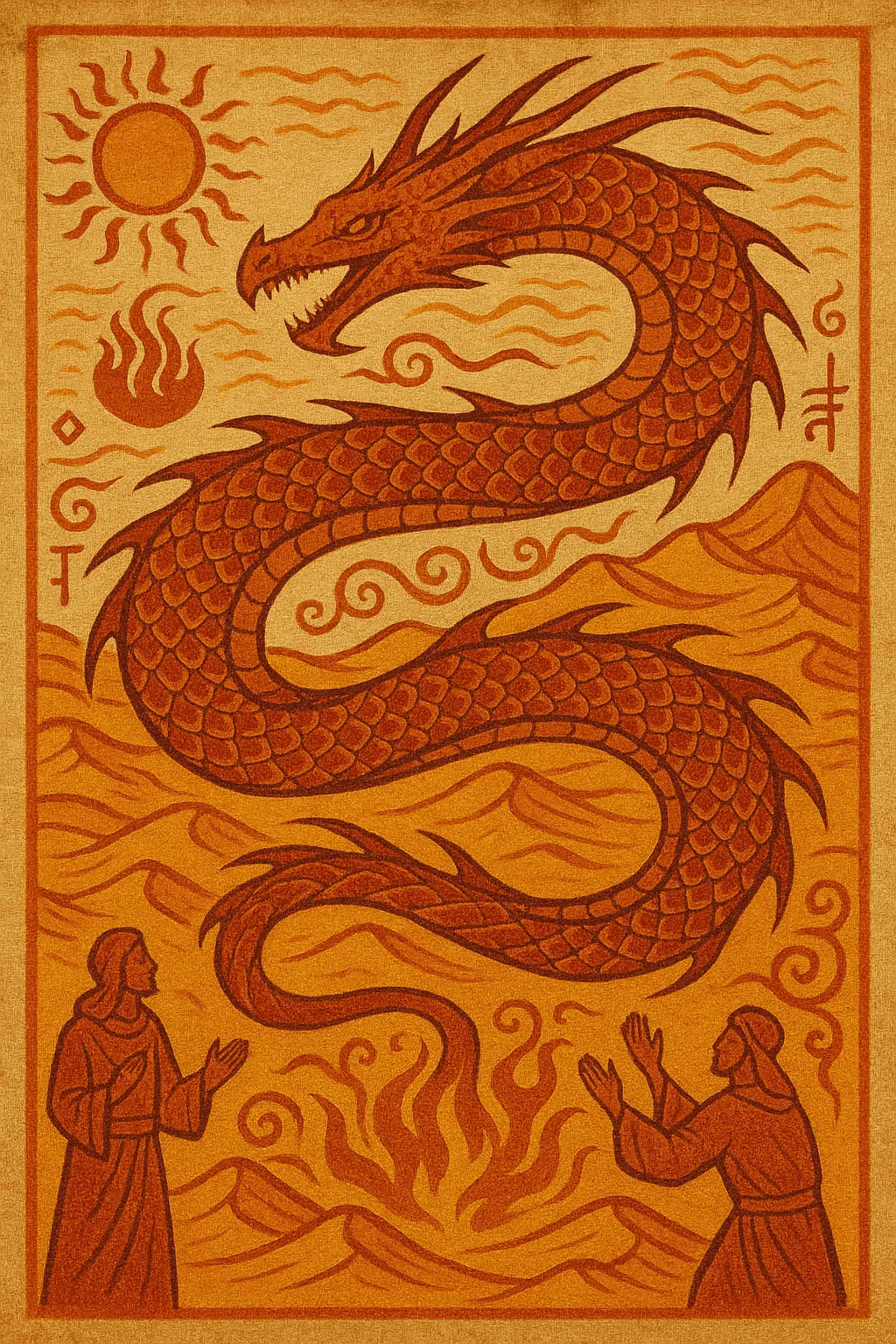 Though often feared, they are not inherently malevolent. More than one desert caravan has reported a Dune Serpent shadowing them at distance for days, only to vanish before the final leg. A few rare scholars even suggest a mutualistic pattern—guiding lost travelers, thinning out sandlurkers, or protecting hidden paths from defilement. But such theories are difficult to confirm. Attempts to capture or tame a Dune Serpent have universally ended in catastrophe.
Though often feared, they are not inherently malevolent. More than one desert caravan has reported a Dune Serpent shadowing them at distance for days, only to vanish before the final leg. A few rare scholars even suggest a mutualistic pattern—guiding lost travelers, thinning out sandlurkers, or protecting hidden paths from defilement. But such theories are difficult to confirm. Attempts to capture or tame a Dune Serpent have universally ended in catastrophe.
Local myths vary. In some desert cultures, the Dune Serpent is a symbol of transience—life and death buried in the same sand. In others, it is a creature of judgment, rising to punish greed or those who disrespect the desert’s balance. Still others claim that the Serpents are remnants of a forgotten war between sky and earth, dragons who refused to choose a side and instead took refuge in the in-between.
They remain elusive, fast as a gale and silent as a grave.
The following magical heirlooms are fictional and lore-based in nature. Each one is an affiliate link to a real-world item on Amazon that we've hand-selected to complement this artifact's lore.
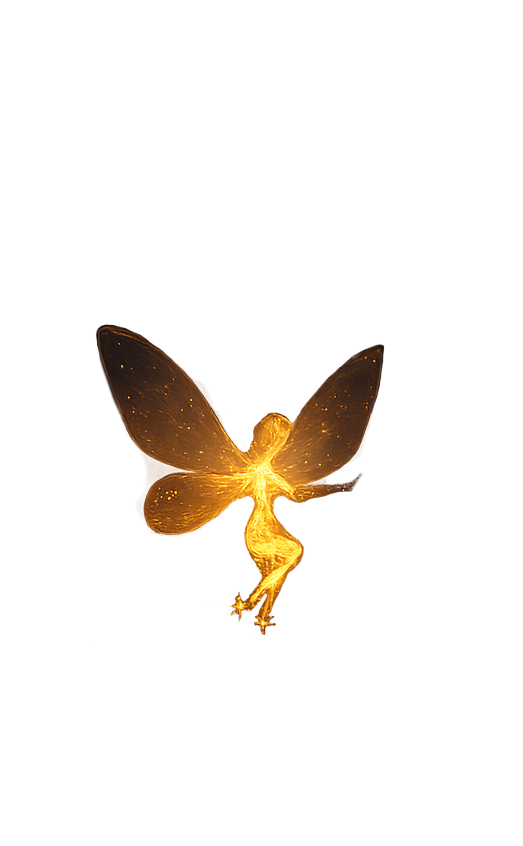
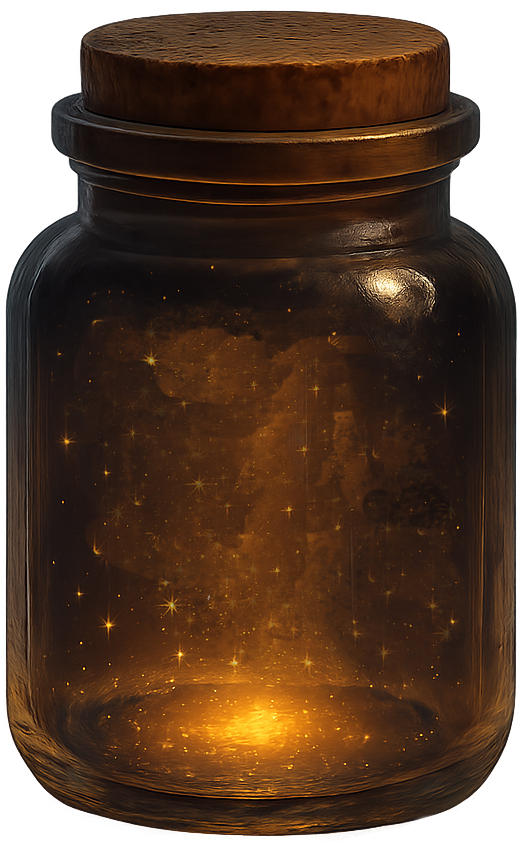
If you click a link and buy an item, we may earn a commission.It costs you nothing extra, but can help keep this little corner of the internet glowing.
What does this mean?
Projects a protective dome that blocks harm, muffles sound, and politely ignores unsolicited opinions.
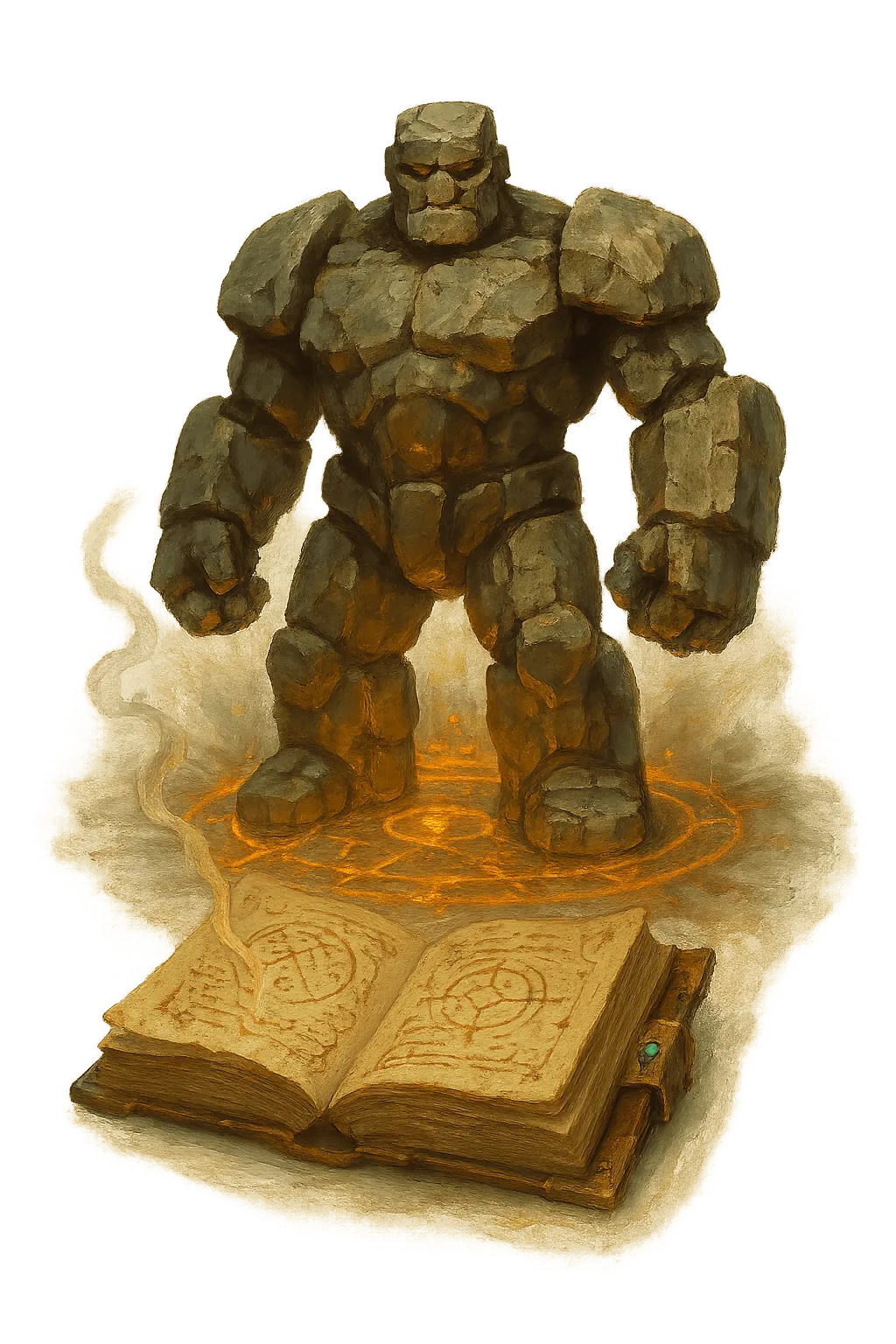
Preloaded with three golem templates: Clay, Stone, and “Oops, It’s Alive.”

Bends and refracts light around the fabric, making it's wearer nearly invisible.
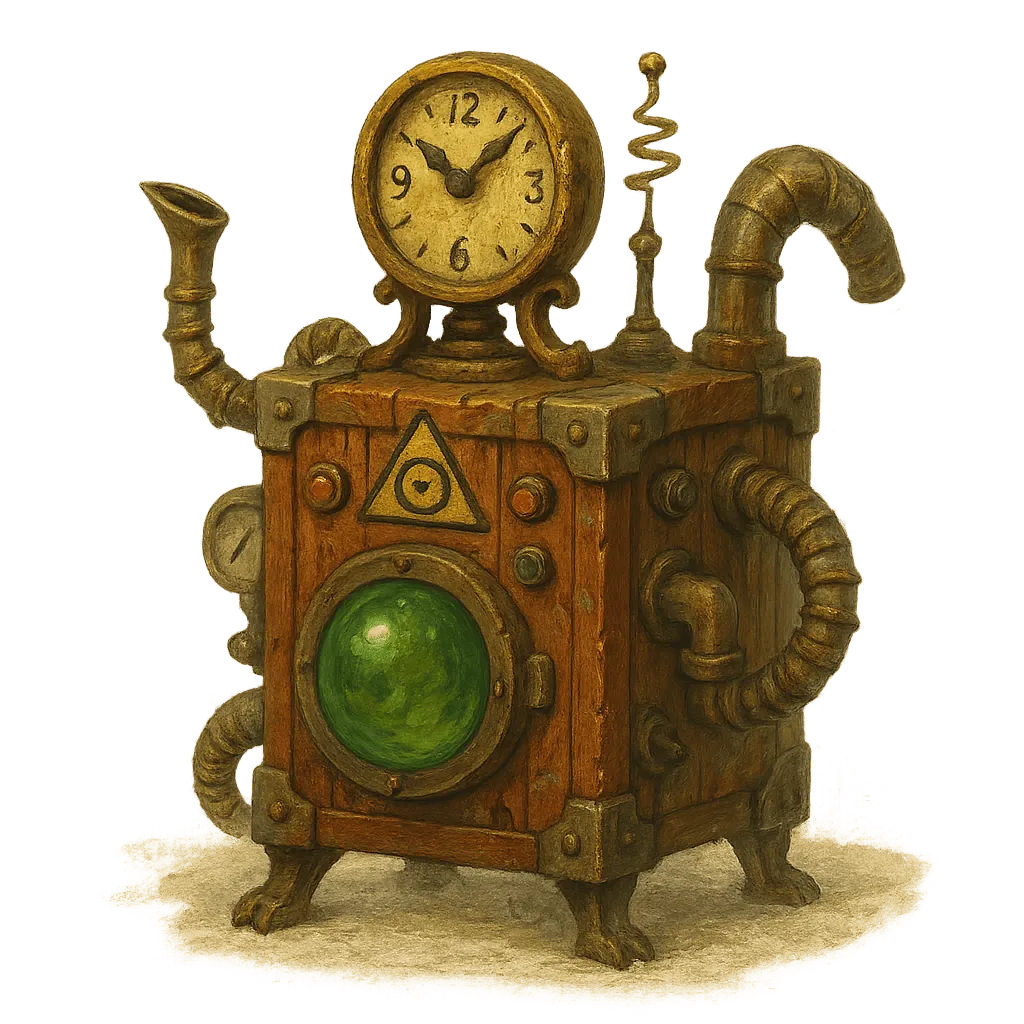
Behold! A machine capable of granting the power to travel through time at the speed of time.



